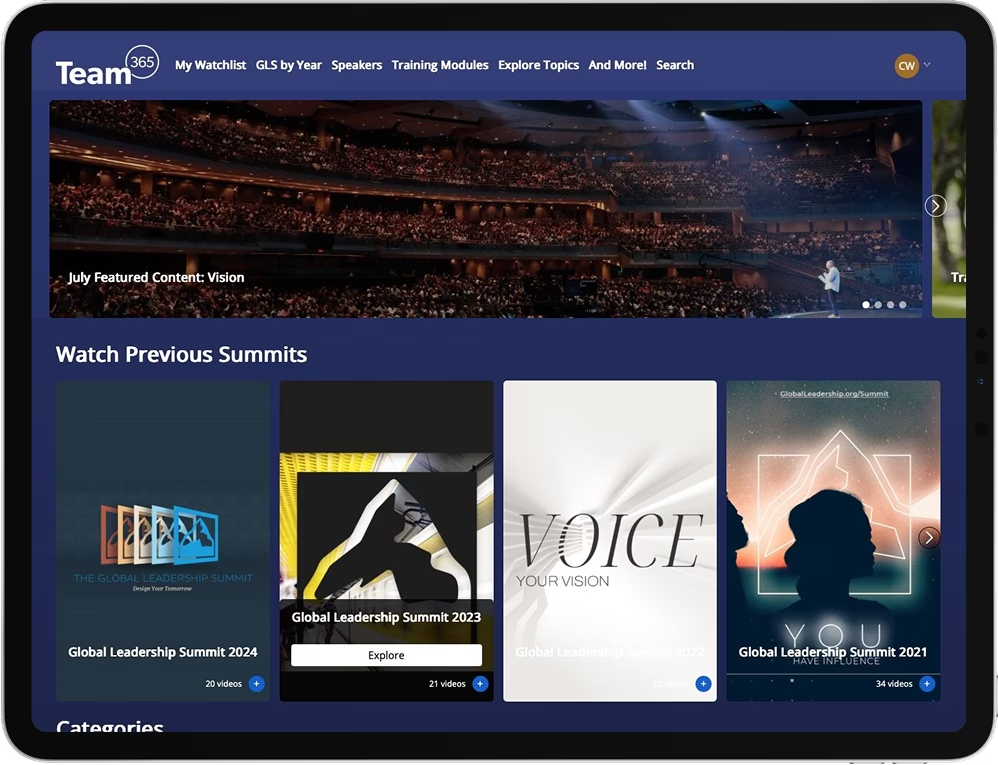This article is a part of the GLS19 Faculty Spotlight series where we feature fresh, actionable and inspiring leadership content from this year's Summit speakers.
At the GLS, our team has become fascinated by Todd Henry’s insights around leading innovation and creative teams. We are excited to welcome him to the GLS faculty.
It's often the little things you do that add up to big problems later.
There are many things a good leader does to help their team gain focus, stay motivated and produce great work. However, there are also some very common mistakes many leaders make that they don't even know are killing their team's ability to engage with their work. This is especially true when doing creative work, because it requires tremendous trust and an ability to take risks that could be costly to correct later.
Great leaders don't assign projects, they define and assign problems to be solved.
The better you are at setting good guardrails for your team, the more they will feel freedom to bring their best ideas and work to the table.
Here are a few ways that leaders unknowingly squelch their team's creativity:
1) Failing to Define the (Actual) Problem
Most organizational work tends to be divided into projects and tasks, which makes them easier to organize and assign. However, creative work isn't really about projects to be completed; it's about problems to be solved. Often, the core problems behind each project are poorly defined, meaning team members are left on their own to figure out what the team is really trying to do. Different understandings and stories emerge, and this creates dissonance inside of the team as the gap widens between what the team thinks it's doing and what it is actually doing.
Great leaders don't assign projects, they define and assign problems to be solved. This allows great latitude in how the team approaches the work and ensures that they see clearly the outcome they're tasked with achieving for the client or company. This means the team will often approach the problem from unexpected angles rather than simply toeing the line and cranking out the project.
Step back and look at the projects your team is tasked with. Is there a clearly defined set of problems behind each, and do team members know what they're accountable for solving?
2) Judging an Idea on Its Presentation, Not Its Merits
Some leaders I've met are quick to judge an idea when it's not presented in a way that resonates with them. Whether that means the team member explained it poorly, or they simply didn't understand the full scope of what they're proposing, the leader immediately dismisses the idea and moves on to something else.
Whenever a team member introduces an idea, resist the urge to immediately categorize it as "useful" or "garbage," and instead try to see its potential merits.
However, this can mean two things: overlooked value and de-motivated team members. Whenever a team member introduces an idea, resist the urge to immediately categorize it as "useful" or "garbage," and instead try to see its potential merits. There's a good chance there's a kernel of value, even if it's obscured by a poor presentation.
Take a pause when a team member shares an idea. Instead of immediately dismissing it, consider potential merits that aren't immediately obvious.
3) Doing Everything in Groups
Everyone loves a good group brainstorming session, no? Not exactly. In fact, it's the bane of many peoples' existence. There are some people who'd rather undergo a root canal than sit through one more group idea session for a project.
These people do not thrive in a group setting. Rather, they are better solo performers, often coming up with great ideas when working at their own pace. One leader I recently interviewed called them "slow twitch" people. While they seem disengaged and disinterested in a meeting, they're not. They're processing. Their best ideas will often emerge a few hours after the group brainstorm, once they've had time to think things through.
Consider giving your team some things to think about in advance of a meeting so the "slow twitch" people have a chance to come up with ideas on their own, while not under pressure to perform in a group setting. Then, they can introduce those ideas in the meeting for everyone's consideration.
Pay attention to the little things you do as a leader. It's the small, everyday breaches of trust that lead to your team's inability to perform when the pressure is on.
This article originally appeared on Inc.com.

Join 405,000+ of your peers for two days of fresh, actionable and inspiring leadership training from a world-class faculty at a location near you.
Related

Meet David Ashcraft, Global Leadership Network CEO: A Passion for Leaders

Why You Should Trade Your Leadership Pipeline Mentality for a Leadership Culture

The Leadership Genius Behind a Hollywood Legend—GLS22 Session Notes

The Tech CEO who sold his home to live with the formerly homeless

Self-Care Should Not Be Selfish: Why Leaders Thrive When They Look Beyond Themselves

Does your team have a microculture?
Leadership That Lasts
Team365 isn’t just a platform. It’s a commitment to grow, lead and live with purpose — every single day. Whether you’re here for content, community or clarity, you’re in the right place. Your leadership matters. Let’s keep going.





